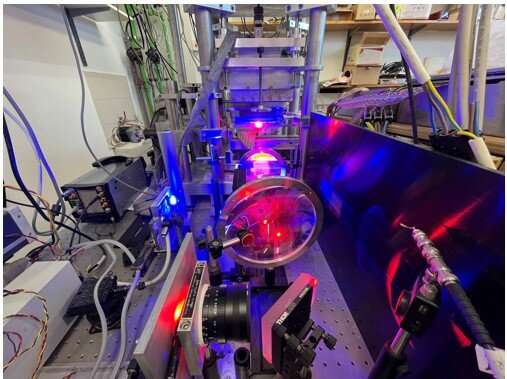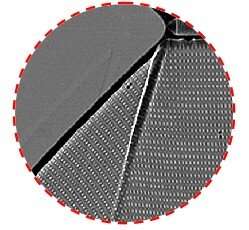New discovery shows tensile cracks can shatter classical speed limits, approach near-supersonic velocities

Researchers at the Racah Institute of Physics, Hebrew University of Jerusalem, have made a discovery that challenges the conventional understanding of fracture mechanics. The team, led by Dr. Meng Wang, Dr. Songlin Shi, and Prof. Jay Fineberg, has experimentally demonstrated the existence of “supershear” tensile cracks that exceed classical speed limits and transition to near-supersonic velocities. Their paper is published in the journal Science.
Traditionally, brittle materials have been observed to fail through the rapid propagation of cracks. Classical fracture mechanics describes the motion of tensile cracks that release elastic energy within a localized zone at their tips, limiting their speed to the Rayleigh wave speed (CR). However, the recent findings by the Hebrew University researchers indicate a paradigm shift in this understanding.
Utilizing brittle neo-Hookean materials in their experiments, the team identified the occurrence of “supershear” tensile cracks that smoothly accelerate beyond the classical speed limit of CR. Surprisingly, these cracks were observed to surpass the shear wave speed (cS) as well. In certain cases, the velocities of these supershear cracks approached dilatation wave speeds, presenting phenomena previously unobserved in classical fracture mechanics.
One of the most remarkable aspects of the discovery is the observation that supershear dynamics are governed by different principles than those guiding classical cracks. This non-classical mode of tensile fracture is not a random occurrence; rather, it is excited at critical strain levels that depend on the material properties.
-
![Tensile cracks can shatter classical speed limits]()
Classical crack moving at half of the sound speed. Credit: Meng Wang, Hebrew University
-

Snapshot of the material deformations formed by a single rapidly propagating crack moving left to right. Credit: Meng Wang, Hebrew University
-
![Tensile cracks can shatter classical speed limits]()
Shockwave from the super-sonic crack – analogous to a sonic-boom. Credit: Meng Wang, Hebrew University
“This finding represents a fundamental shift in our understanding of the fracture process in brittle materials,” commented Prof. Jay Fineberg, the corresponding author of the research. “By demonstrating the existence of supershear tensile cracks and their ability to exceed classical speed limits, we have opened up new avenues for studying fracture mechanics and its applications.”
The implications of this research extend beyond the realm of physics. By showing that tensile cracks can surpass their classical speed limits, the researchers have paved the way for a new understanding of fracture mechanics.
More information:
Jay Fineberg et al, Tensile cracks can shatter classical speed limits, Science (2023). DOI: 10.1126/science.adg7693. www.science.org/doi/10.1126/science.adg7693
Citation:
New discovery shows tensile cracks can shatter classical speed limits, approach near-supersonic velocities (2023, July 27)
retrieved 27 July 2023
from https://phys.org/news/2023-07-discovery-tensile-shatter-classical-limits.html
This document is subject to copyright. Apart from any fair dealing for the purpose of private study or research, no
part may be reproduced without the written permission. The content is provided for information purposes only.
For all the latest Science News Click Here
For the latest news and updates, follow us on Google News.



